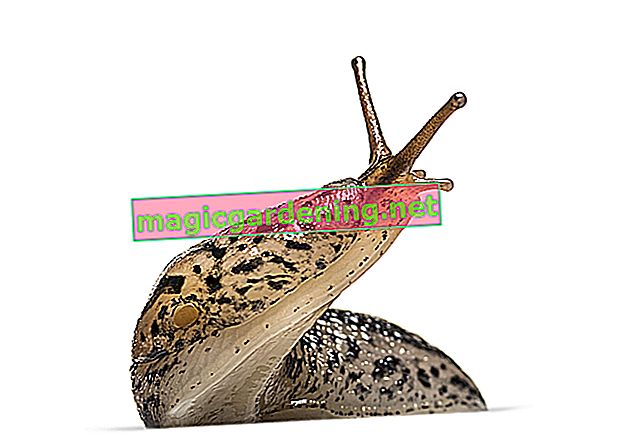
Well protected inflorescences
This flower shape arises because the inflorescence axis of the fig grows upwards in a ring. The many small individual flowers thrive on the inside of this axis cup. A small opening remains at the top of the inflorescence. This is loosely closed by bracts. When the fig ripens, the leaves recede and close the fruit almost completely.
also read
- The fruits of the fig tree
- Caring for the fig tree
- The rather late budding of the fig tree
If you open a ripe fig, you will see numerous tiny nuts surrounded by the tasty pulp. Each core is an independent stone fruit that has formed from one of the small flowers.
Wasp and fig - an inseparable symbiosis
The real fig is single-sexed and has both male and female flowers. These figs are fertilized by the fig gall wasp, which is two to three millimeters in size. The animal lays its eggs in the male ovary of the flowers and lives there during the larval stage. The female gall wasps take in the pollen when they hatch. They carry it into the female infructescence of the fig tree in search of a suitable place to lay eggs.
Due to the fig's complicated flower biology, the wasp can only lay its eggs in the male flowers. The aromatic fruits develop from the fertilized female flowers.
Figs that do not depend on pollination
Since the fig gall wasp is only native to the south of the Alps, figs can only be cultivated in our latitudes since the breeding of fig trees, which bear fruit without cross-fertilization, has been successful. Depending on the variety and location, the flowers form up to three times a year on the annual wood.
So you can distinguish the figs into three main types:
- Smyrna type: the figs ripen after being fertilized by the wasp
- Adriatic type: fruits develop without fertilization. Since the yields are higher, this fig is preferred to be grown today.
- San Pedro type: One generation of flowers produces fruits without pollination while the second generation of flowers produces fruits with fertilization.
Tips & Tricks
Wild forms of the fig from the Mediterranean area do not produce any fruit in our latitudes. You should therefore refrain from digging up a fig tree as a souvenir while on holiday. This will save you the disappointment of caring for a fig that will never bear fruit.








